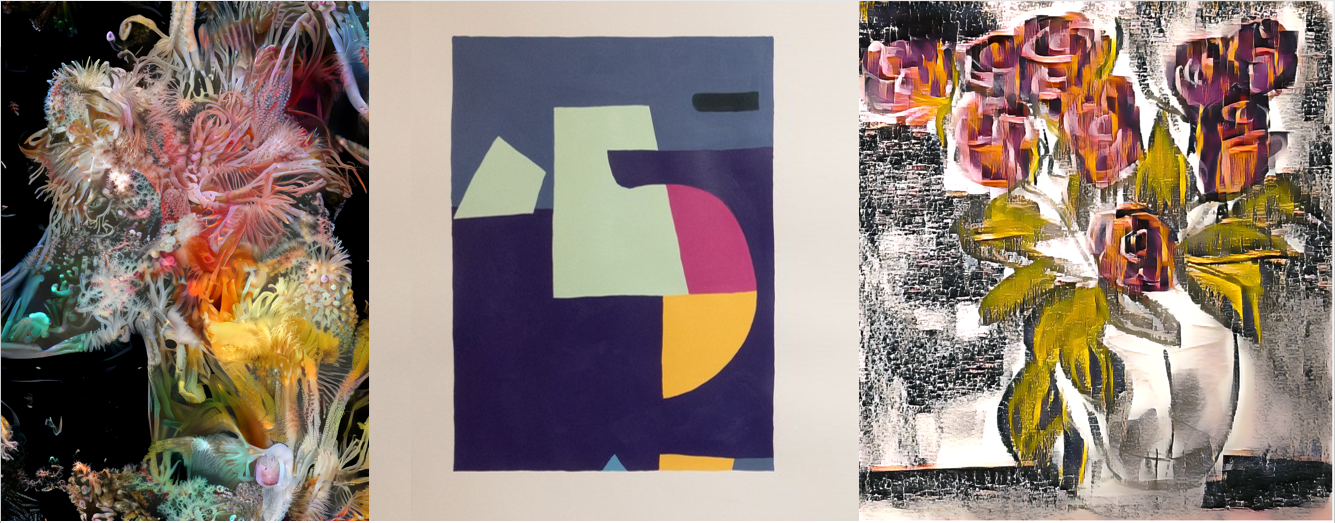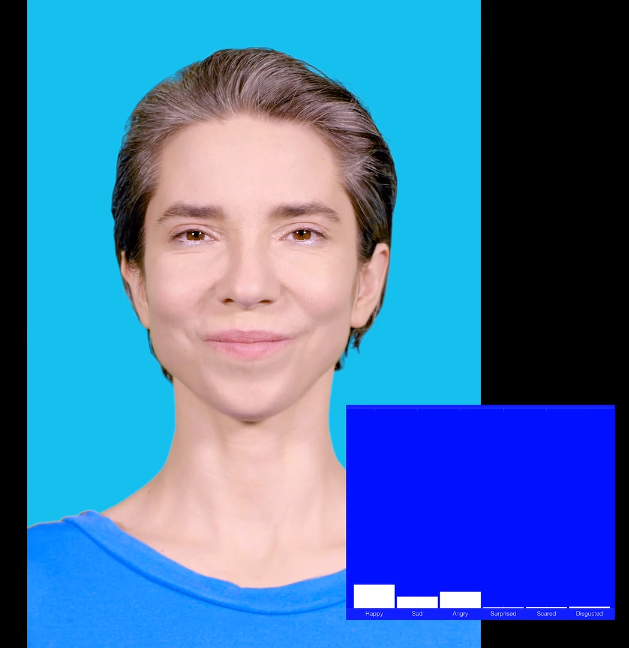If you are not a WiDS Zurich 2019 attendee, but wish to visit the art exhibition, please write us at attendees@wids.ch
It’s a machine’s world
by Luba Elliott
Our society is powered by machine learning, which suggests our music playlists, recognises our faces in airports and voices at home and helps us with grammar or translation. The arts are no different. With the wave of interest in experimenting with machine learning in every realm, an artistic practice has crystallised that pushes technology to its limits, creates new visions of the world and highlights the consequences of a machine’s world. This exhibition presents the works of eight female artists at the forefront of the AI art domain.
The rapidly advancing field of machine learning has presented artists with a wealth of technologies to play and experiment with, shaping their art practice in the process. Joanne Hastie uses machine learning to suggest compositions based on her artistic preferences for her abstract works Things I have not painted before (2019). After painting, image recognition models classify her works as certain objects, giving rise to titles such Planetarium. The artist duo Jana Sam and Alex Mordvintsev, the creator of DeepDream, made Neural Origami (2017-2018) in their search for a new aesthetic, which made the hallucinogenic sensory overload of DeepDream abstract and simple. Helena Sarin crafts Neural Bricolage (2019) by exploring new creative possibilities of the latest GAN models on her own drawings, merging art mediums, textures and themes. Meanwhile, Anna Ridler adds the human touch of an artist to the cold machine aesthetic in Fall of the House of Usher (2018), where she highlights the fugitive aspects of a machine’s memory as it is tasked to recreate the style of her ink drawings.
In addition to their artistic applications, the machine learning techniques of today help us to imagine the world of tomorrow. In What if machines can see music….? (2017) Sey Min investigates a world where machines are able to visualise music, showing us the forms, figures, similarities and relationships of various audio chunks as interpreted by the machine’s eye. Sofia Crespo’s Neural Zoo (2018) is a visual archive of a biome that doesn’t exist, yet could have done – the images resemble an imagined version of nature as our visual cortex recognizes the textures, but not their arrangement.
With the rapid progress in the field, it is critical that we do not lose sight of the challenges presented by the technology and its social applications. Coralie Vogelaar exposes what happens when we allow technology to dictate and analyse complex aspects of humanity such as emotion, seen in Random String of Emotions (2018) through an actress attempting to act out AI-generated facial expressions. In Made for Women (2018), Gretchen Andrew challenges the associations of the term by displacing the images of pink, glittery, appearance-focussed products in search engine results with paintings of women making their own worlds, thus diversifying the dataset the machine learning algorithms use to understand female identity.
Together, these women artists present their world visions, interpretations and expressions as shaped by the machine. After all, it is no longer a man’s world. It’s a machine’s world, and these women artists are well-placed to define it.
The curator
Luba Elliott is a curator, artist and researcher specialising in artificial intelligence in the creative industries (creative AI). She is currently working to educate and engage the broader public about the latest developments in creative AI through monthly meetups, talks, workshops and exhibitions at venues including The Photographers’ Gallery (London), NeurIPS Conference (Long Beach/Montreal), Leverhulme CFI (Cambridge) and Impakt Festival (Netherlands). Her Creative AI London community includes 2,300+ members. She is part of the AI Think Tank of the British Interactive Media Association and has advised organisations including Google and the World Economic Forum on the topic.
Visit Luba’s website or watch Luba’s talk on how artificial intelligence is used in arts and which tools can be used to create art works using machine learning.













